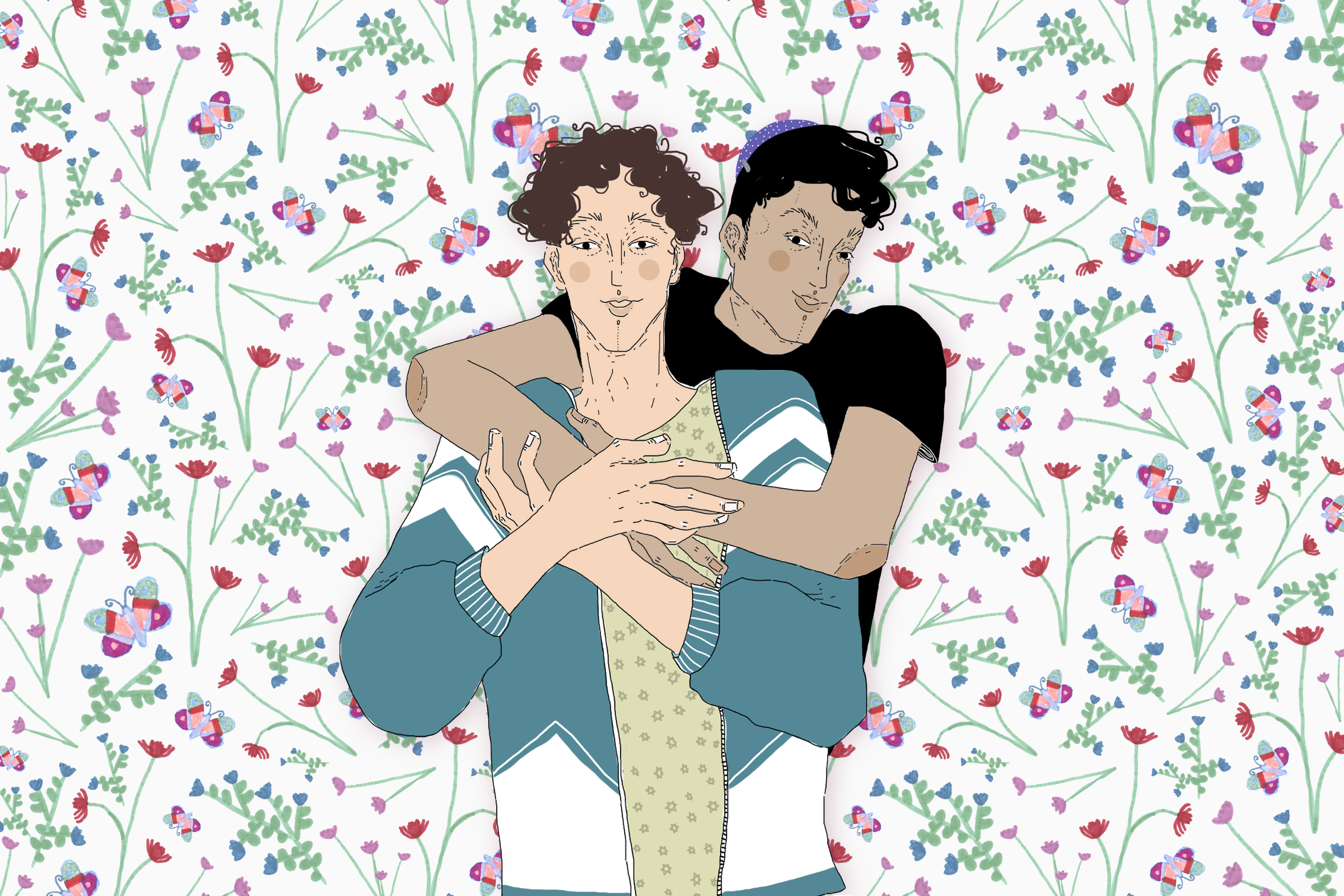The NJB – nice Jewish boy – has long been a staple of American Jewish culture. From Abraham welcoming guests into his home to Ben Platt singing about his parents’ relationship, being “nice” has historically been tied to Jewish masculinity. While this has been used as both a positive and negative stereotype, the staying power of the sentiment is indicative of its cultural resonance.
The NJB is the doting son and lanky, curly-haired goof who probably had a lot of female friends in high school. Maybe he could play a sport, but he likely swam or ran track, never football or basketball (unless he was at a Jewish school). And of course, there was always the perennial question of the NJB… is he, you know…
Gay? Yes, the NJB sounds like a ‘90s gay-boy archetype. A mamma’s boy who is adorably awkward and not typically masculine. He is soft spoken and sensitive. When I first came out, I was often met with the response, “I wasn’t sure if you were gay or just Jewy.”
This particular form of Jewish masculinity has vexed the minds of thinkers like Daniel Boyarin, a writer and historian who has tried to get to the bottom of what it means to be a Jewish man. As Boyarin wrote, “Thinking about the sissy body of the ‘Jewish man,’ I think simultaneously about another discourse and practice—possibly but not necessarily liberatory—that constructs the male body in a very different way. The ‘gay male gym body’ is an example of another male body constructed as an alternative to the heterosexual male body.” In articulating the effeminate Jewish man and placing it in contrast with the hyper-masculine gay male ideal, Boyarin demonstrates the similarity that is born of the extreme contrast.
Ultimately, the overwhelming liberal bend of the American Jewish community and the particular brand of NJB masculinity engender a unique type of Jewish queer man: the NQJB — nice queer Jewish boy (or NJQB, depending on your view of the perennial American Jew/Jewish American debate).
The ease with which the NQJB can enmesh in liberal Jewish circles is perhaps indicative of a uniquely Jewish form of masculinity, one that is comfortable flirting with the feminine, even if the man himself flirts with the masculine. At the 2020 Emmys, Dan Levy (show runner and star of Schitt’s Creek) was on display as the quintessential NQJB, racking up award after award. Throughout the series, Levy’s character, David Rose, is unabashed in his queerness and femininity. With few small exceptions, his sexuality is not the subject of tension and derision in the show, but personality traits among others that create the complex character we come to know and love. In the era of the NQJB, the liberal Jew does not need to justify his sexuality or square it with rigid notions of masculinity.
Comfort with gender transgression and queerness seem natural in some Jewish circles, but remain completely foreign to others. When I was growing up in a Modern Orthodox community, there was a strict line drawn between the acceptability and valorization of the NJB and the transgression of the NQJB. Floral prints and pastels were acceptable male attire, but a skirt was most certainly not.
During a summer spent at a Modern Orthodox summer camp in Pennsylvania, our counselors organized a club night for our division of 14-year-olds. In adherence to halakhic norms, a partition was erected between the male and female campers to maintain proper gender segregation. Those movable walls were only a small inconvenience for the pubescent teenaged campers. The party became a deeply homoerotic rager that would rival any under-21 gay club. Boys were grinding on each other far more sexually than we would have dared dance with any of our female counterparts.
The next day, clearly uncomfortable and a bit embarrassed, our division head spoke to the boys about the prior night’s transgressions. “We will not be talking about this in the future,” was basically the gist. Aware that something had been wrong, but unwilling or unable to bring himself to acknowledge the possibility of a genuinely queer space emerging under his watch, we were given a vague reprimand with no real consequence.
While we were just dancing in the prescribed context, the way we transformed the space and meaning of the social divide was unacceptable. The gender segregation had intentionally created a space for homosocial bonding, but the party had gone a step too far crossing into the homoerotic. This was just not how nice Jewish boys should behave.
As I have grown up and watched my former community change, I have noticed an extreme transformation in how I am understood by the people I grew up with. What was once my unspoken flirtation with queerness has become an explicit reality. While I am occasionally met with harmful halakhic justifications of my “lifestyle,” by and large my former community has embraced my NQJB status — though perhaps to a fault.
Still, the widespread acceptance of the NJB gives me hope for the ultimate acceptance of the NQJB in more parts of the Jewish world. The distinction is already minimal, we are just a small push away. Obviously, this is a hyper-idealized view of a sensitive masculinity in the Jewish world, and I know first-hand how optimistic it is. But the history of gender transgression emphasizes the fulfillment of fantasy, and the dreamy NQJB is a fantasy within reach.



